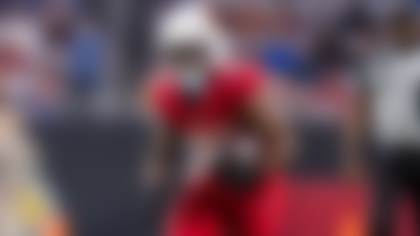When I was initially assigned this same topic one year ago -- identifying which units had underperformed the most during the 2018 campaign -- I started by creating a new model to measure performance that was more subjective than my normal models based specifically on game output. I used clues about offseason free-agent signings, salaries, preseason projections and when players were drafted -- and then adjusted for major injuries over the course of the season in order to calibrate expectations.
In this year's file, driven by the desire to incorporate as many "outsider" data points as possible, I also factored in my win share model. (Reminder: My win share figure is defined as the measurement of how each player, position group and side of the ball impacts a team's ability to earn first downs and touchdowns, as related to wins. And yes, these can be negative.)
The whole point is to apply structure in an unbiased way in order to contextualize football and take into account the situations that lead to specific outcomes -- and then, in this case, to relate them back to expectations. That last part really matters, because this analysis is intended to talk about underperformance in context. For example, Miami had traded both Laremy Tunsil and Minkah Fitzpatrick by mid-September, so the Dolphins' O-line and safety results for the season are viewed through that strategic lens. Since this article is about underperforming units, the areas my model flagged for negative impact were compared to areas of high preseason expectations and/or disproportionate negative win share.
Below, you'll find 10 units that stood out the most when it came to underperformance. Obviously, these lackluster position groups should significantly influence the affected teams' approach this offseason.
New York Giants pass rush
Spending four of their first five 2019 draft picks on DE Dexter Lawrence (No. 17 overall), CB Deandre Baker (30), OLB Oshane Ximines (95) and CB Julian Love (108) would suggest that the G-Men were focused on stopping the pass. However, this is not how it played out, as New York allowed 123 big plays (third-most in the NFL, accounting for runs of 10-plus yards and passes of 20-plus) and only sacked opposing quarterbacks 36 times (22nd). Next Gen Stats allow us to dig a little deeper, showing that Big Blue only pressured opposing quarterbacks on 24 percent of overall dropbacks (ranking 25th in NFL) and just 20.9 percent of dropbacks when rushing four or fewer defenders (28th). Adding even more context, when I use my computer-vision models, the Giants' disruption (ability to come within 5 feet of an opposing quarterback) on downs where the game was still within one possession in the second half ranked 31st.
Pittsburgh Steelers wide receivers
Yes, I have absolutely factored in that Ben Roethlisberger only attempted 62 passes before undergoing season-ending elbow surgery. However, a lot more goes into this assessment, including things like route running and creating space for other pass catchers (or RBs in the ground game). As passing on first down becomes an increasingly useful tactic across the NFL, it's quite notable that the Steelers posted the league's lowest passer rating in this area (69.8). When my model flagged this significant shortcoming, I dug in more. The position group overall -- on every down -- averaged just 2.1 yards of separation on passes of 5-plus air yards. That was the lowest figure in the NFL. In the wake of Antonio Brown's offseason departure, JuJu Smith-Schuster was expected to really take over the WR1 spot. Yet the third-year pro's average yards of separation was also down this season, from 3.0 in 2018 to 2.4 in 2019. There were flashes of efficiency -- James Washington's win share in a few games -- but for a team with a track record of excellence at this position, 2019 was extremely disappointing.
Los Angeles Rams offensive line
In the 2018 campaign, when the Rams made it all the way to the Super Bowl, Pro Football Focus ranked the team's offensive linemen first overall, with a collective grade of 80.1. This season, when the Rams missed the playoffs altogether, PFF ranked Rams O-linemen 31st (53.2). Focusing on the passing game, my computer vision-based measurements reflect this downturn. In 2018, the Rams kept opposing defenders outside of a 5-foot halo around Jared Goff on passing downs at the third-best rate in the NFL. In 2019? They dropped to 29th. Next Gen Stats also reveal that Goff had the fifth-lowest passer rating against the blitz this season (72.0). I went back to cross-reference blitzing situations from 2018 with those from this season. On average, the entire O-line was pushed back about 3.3 feet more when defenses blitzed this season versus last. (I used an average here because different defenders rush from different spots, blitz packages differ and chipping/double-teaming strategies change.) This extra 3.3 feet means that even if a defender didn't get within 5 feet of Goff, the quarterback had significantly less space to work with, especially visually.
Arizona Cardinals offensive line
The Cardinals took a quarterback with the first pick of the 2019 NFL Draft, one year after selecting a different signal-caller at No. 10 overall. Clearly, first-year head coach Kliff Kingsbury viewed the position -- and specifically, getting the right kind of player at the position -- as absolutely crucial to his program's success. And obviously, you'd like to keep such a valuable piece as clean as possible. How did Arizona do on that front? Well ... Pro Football Focus gave the Cardinals' O-linemen a collective grade of 62.5, which ranked 24th. Interestingly, Next Gen Stats show that, in terms of pure heat, Murray was pressured on just 13.1 percent of attempts (the lowest figure in the NFL). Here's where context comes in, though: Murray's ability to run and throw on the run combined to rank fifth-best in the NFL in my models, in terms of earning first downs and touchdowns. The problem for the Cardinals? Helping create rushing opportunities and blocking long enough to allow pass catchers to get open was a major source of inefficiency. If Arizona wants to set Murray and Co. up for success on offense, a good place to invest is in the trenches. Better O-line play will make Murray's special traits even more potent.
Los Angeles Chargers quarterback
According to Next Gen Stats, when under pressure, Philip Rivers threw just four touchdown passes against 10 interceptions. Only Jameis Winston had more pressure picks with 11. How about on passes with 2.5 seconds or more to throw, to help approximate a lower-pressure situation? Rivers threw 10 touchdown passes against 15 interceptions -- again, second-worst to Winston (17). And of Rivers' 15 picks on those slower-developing plays, nine of them came when his receiver had at least 3 feet of separation at time of release.
Oakland Raiders secondary
In Mike Mayock's first draft as a general manager last April, the Raiders spent notable draft capital on pass rushers (No. 4 overall pick Clelin Ferrell, fourth-rounder Maxx Crosby) and defensive backs (first-round safety Johnathan Abram and second-round cornerback Trayvon Mullen). Obviously, pass defense was an area of concern, so the goal was to infuse both the front and back with talent and get the two ends of the defense to work together better. But Next Gen Stats tell us that when the front did not apply pressure, the Raiders allowed a 112.1 passer rating (second-worst in the NFL, ahead of only the Cardinals). When I measured separation allowed, Oakland's defensive backs allowed the second-highest percentage of passing downs where receivers had more than 3 feet (68 percent).
Houston Texans secondary
In the red zone, no team allowed a higher per-play average than the Texans (3.84 yards) and only two teams allowed a more generous completion percentage than Houston (64.4). Overall, the Texans allowed 33 passing touchdowns, which was tied for the fourth-most. When Houston's front did not apply pressure on the opposing quarterback, per Next Gen Stats, the Texans allowed a 70.2 completion percentage (sixth-highest). And this is despite the fact that Houston added two former first-round picks during the season, acquiring Gareon Conley in a trade with the Raiders and claiming Vernon Hargreaves off waivers. Incorporating the same measurement for "open" receivers that I explored with the Raiders' secondary just above -- the amount of passing downs in which receivers gained more than 3 feet of separation -- Houston ranked dead last at 69 percent.
Dallas Cowboys secondary
No team allowed a higher completion percentage on first down than Dallas at 71.4. That's a big problem, considering how widespread first-down passing is becoming in today's NFL. Meanwhile, the Cowboys totaled just seven interceptions all season, tied for fewest in the league with Arizona and Detroit. And while takeaway stats can be random and misleading at times, I have some additional contextualization here: Only four of those picks occurred when the defensive front did not get pressure, a total that ties Dallas for the fewest in the NFL with Arizona and Oakland, per NGS.
Chicago Bears quarterback
Most of the coaches and front office executives I speak to generally believe that three seasons is a fine sample size on which to judge a quarterback's long-term viability. Unfortunately, Year 3 did not go well for Mitchell Trubisky. In 2019, only 0.7 percent of his pass attempts went for 20-plus yards -- that was the lowest figure among 32 qualified quarterbacks, per Next Gen Stats. And that's not just measuring air yards; we're talkin' total yards, which includes yards after the catch. Trubisky had just 36 total completions that went for 20-plus yards (27th in the NFL). The Bears' offense overall produced just 68 big plays (dead last in NFL; 100 is average), in part because strategic passing beyond shorter routes didn't connect. Chicago averaged just 4.66 yards per play, which ranked 31st.
Atlanta Falcons secondary
Heading into the 2019 campaign, the Falcons were a pretty popular playoff pick. Then they lost seven of their first eight games. To Dan Quinn's credit, Atlanta did rally to finish at 7-9. But what happened in the first half of the season? And were the problems truly fixed down the stretch? Well, the turnaround reveals some traditional stats that need more context for a real understanding. In Weeks 1-8, the Falcons had just two interceptions (tied for the fewest) while allowing 19 receiving touchdowns (second-most) and yielding a 53 percent third-down conversion rate (highest in NFL). After the Falcons' Week 9 bye, they snagged 10 interceptions while giving up just nine passing touchdowns. And Atlanta allowed just a 25.8 percent third-down conversion rate (lowest in NFL in Weeks 10-17). Did the secondary really step it up in the back half of the season? Well, interceptions can be misleading. Over these same time periods, Atlanta went from notching just seven sacks in the first eight games to 21 over the final eight. Using computer vision, my measurements show that the uptick in disruptions (monitoring the 5-foot halo around the quarterback) went from 9.8 percent of opposing dropbacks to 34.9 percent. Meanwhile, the pass catcher separation allowed stayed pretty similar throughout the whole season. So it appears that the positive difference in the second half of the season came from the front of the defense, not the back. And going through the film with two NFL coaches further supported this notion.
Follow Cynthia Frelund on Twitter @cfrelund.




